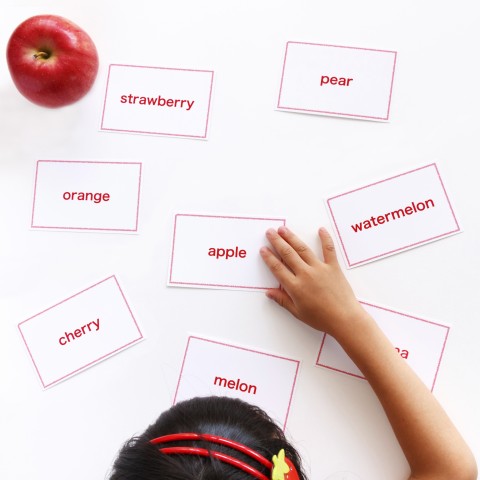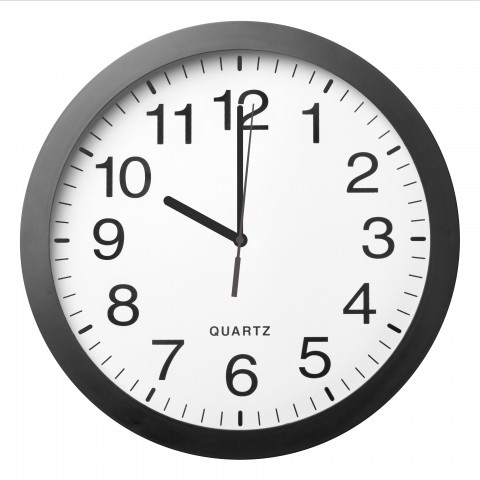
Do you fancy studying or working abroad in Hong Kong, but don’t speak Cantonese as your first language? Or maybe you want to know how good your Cantonese is after months of hard work? No worries, we’ve got you covered!
Today on CantoneseClass101.com, we’ll be providing you with a summary of the most popular Cantonese language exams—so read on!
 Table of Contents
Table of Contents
- Benefits of Taking a Cantonese Language Exam
- What Cantonese Language Exams are There?
- COPA (CUHK)
- ACTFL Oral Proficiency Interview (OPI)
- Other Exams: GCSE Cantonese & HKDSE Chinese
- Bonus: Tips on Preparing for Your Cantonese Proficiency Exam
- How CantoneseClass101.com Can Help You Learn More Cantonese
1. Benefits of Taking a Cantonese Language Exam

There are lots of reasons why taking a Cantonese test can be good for you (and your studies)! In the following sections, we’ll go over the top benefits you can expect from doing so.
1. It will improve the way you learn.
Taking tests and exams will give you a better idea of your current Cantonese proficiency level. This knowledge will allow you to see if there are any gaps between reality and your expectations. If so, you can do some reflection to figure out the best way to improve your studies and learning habits.
When you sit for an exam, you’ll have to recall and apply what you’ve learned. So making your studies more targeted allows you (or forces you) to remember useful information. It also improves your ability to apply what you’ve learned in new contexts.
2. It will increase your motivation.
Before an exam, people tend to study harder than ever. With a goal or target in mind (and the exam fees you paid), you’ll have a greater urge to study and improve your Cantonese.
3. It will demonstrate your Cantonese abilities to others.
If you’re looking to work in Hong Kong and want to impress your potential employer, getting a good Cantonese exam score will help a lot. Not only does it prove that you know Cantonese, but it also proves that you’re resilient and a great learner. Afterall, Cantonese is one of the hardest languages in the world!
2. What Cantonese Language Exams are There?

Unlike IELTS for English-learners or JLPT for Japanese-learners, there are no government-administered Cantonese language tests in Hong Kong. However, we do have some oral tests designed for Cantonese language learners. The two most common tests are COPA (offered by the Chinese University of Hong Kong [CUHK]) and OPI (offered by the American Council on the Teaching of Foreign Languages [ACTFL]).
There are also two more comprehensive Cantonese examinations: GCSE Cantonese and HKDSE Chinese. They’re actually part of the public examination designed for secondary school students.
GCSE is a test that fifteen- and sixteen-year-olds must pass in order to graduate from the Key Stage 4 phase of their secondary education in either England, Northern Ireland, or Wales. HKDSE is Hong Kong’s university entrance examination, administered upon completion of a three-year senior secondary education.
3. COPA (CUHK)
1. Introduction
The COPA Cantonese exam is an adaptation of the Chinese Speaking Test (CST) developed by the Center for Applied Linguistics in the United States.
Duration: 30-45 minutes
The examinee hears the test instructions and questions in their mother tongue (English, Japanese, or Korean) from a master tape, and then responds in the foreign language he or she is learning (Cantonese or Putonghua). Tasks cover a wide range of topics and speech functions, and responses are evaluated by two specially trained COPA raters.
The rationale in scoring the COPA is to find the level at which the examinee consistently fulfills the speaking functions. Each COPA task presents the examinee with a speaking task of a defined level of difficulty, based on the Proficiency Guidelines developed by the American Council on the Teaching of Foreign Languages (ACTFL). The ACTFL Guidelines describe aspects of speech that characterize speakers as having a given level of proficiency. These guidelines were developed in response to a movement in the language-teaching community, stressing the importance of meaningful communication in the foreign language classroom.
All assessment tools are made available to the public so that learners who want their speaking proficiency in Cantonese assessed may obtain an objective evaluation based on testing and linguistic principles. Currently, English-speakers are able to take the COPA in Cantonese and Putonghua. Students will be notified when the Japanese and Korean versions are available.
2. Score reporting
A certificate will be issued with a description of the proficiency level attained by the examinee. The possible levels are: Novice, Intermediate, Advanced, and Superior. This certificate will serve as an indication of his/her speaking ability and can be used for various purposes.
The official reports will be sent to the examinee two months after the testing date. Two additional reports will be sent free of charge to institutions designated by the examinee at the time of the evaluation. All subsequent requests to send the official report directly will be charged HK$50 per copy.
3. Fees and application procedure
- Application fee: HK$100
- Examination fee: HK$800
The following groups can take the exam at a special rate of HK$600:
- Current CUHK and CLC students
- Students from CUHK university division Advanced Putonghua course
- Current CLC TCFL Advanced Diploma Programme students
You may download the application form on the official website and bring a check (payable to “Chinese University of Hong Kong”) with you on exam day.
4. ACTFL Oral Proficiency Interview (OPI)
1. Introduction
Duration: 15-30 minutes
The OPI test takes the form of a phone call, during which the candidate and tester have a guided conversation. After a short introduction, the tester will ask the candidate personalized questions and adapt the conversation depending on the candidate’s language skills, interests, and comfort level.
As this is a standardized test, it’s a reliable way of measuring a person’s speaking ability in a given language. This Cantonese proficiency test is designed to reveal patterns of weaknesses and strengths that the candidate possesses.
The OPI tests the candidate’s ability to speak Cantonese effectively in everyday situations. The test does not base its grading on specific curriculum content, and because each interview is adapted for the individual candidate, a candidate’s score or performance is not compared to that of other candidates.
2. Score reporting
The OPI is graded according to the ACTFL Proficiency Guidelines (2012), the Interagency Language Roundtable (ILR) guidelines, or the Common European Framework of Reference for Languages (CEFR) guidelines. The scoring guidelines are determined based on the type of certification the candidate is looking to attain.
Here’s a quick breakdown of how each rating scale works:
- ACTFL – A candidate may be rated anywhere between Novice and Superior.
- ILR – A candidate may be rated anywhere from ILR 0 (no proficiency) to ILR 5 (functionally native).
- CEFR – A candidate may be rated anywhere from A1 to C2.
3. Fees and application procedure
- Examination fee: US$159.00
You may schedule a test online.
5. Other Exams: GCSE Cantonese & HKDSE Chinese

Now we’ll briefly introduce the GCSE Cantonese and HKDSE Chinese tests. As explained earlier, these two are actually part of the public exams, and are therefore much more difficult. We do advise that language-learners, especially beginners, aim for the two exams mentioned above (COPA and OPI) rather than the following two!
1. GCSE Cantonese
GCSE in Chinese (spoken Cantonese) consists of four parts to assess your Cantonese listening, speaking, reading, and writing skills:
- Part 1: Listening & Understanding in Chinese (Cantonese)
- Length: 45 minutes, including 5 minutes of reading time
- Weighting: 25% / 50 Marks
- Part 2: Speaking in Chinese
- Length: 10-12 minutes plus 12 minutes of preparation time
- Weighting: 25% / 70 Marks
- Part 3: Reading & Understanding in Chinese
- Length: 1 hour 5 minutes
- Weighting: 25% / 50 Marks
- Part 4: Writing in Chinese
- Length: 1 hour 25 minutes
- Weighting: 25% / 60 Marks
You may find out more about the exam on the official university website.
2. HKDSE Chinese
HKDSE Chinese is designed for very advanced Cantonese speakers—even local secondary school students tend to find it difficult!
- Part 1: Reading
- Length: 1 hour 30 minutes
- Weighting: 24%
- Part 2: Writing
- Length: 1 hour 30 minutes
- Weighting: 24%
- Part 3: Listening and Integrated Skills
- Length: 1 hour 30 minutes
- Weighting: 18%
- Part 4: Speaking
- Length: 25 minutes
- Weighting: 14%
School-based assessment (SBA) will account for the final 20%. For those who aren’t sitting for the exam as secondary school students, an average SBA score will be applied instead.
You may find out more about the exam here.
6. Bonus: Tips on Preparing for Your Cantonese Proficiency Exam

- Do as many mock tests as you can.
- Study the vocabulary required for the test.
- Study the sample answers to the questions.
- Speak more with native Cantonese-speakers.
Remember, practice makes perfect!
7. How CantoneseClass101.com Can Help You Learn More Cantonese

Planning to take a Cantonese exam soon? Come and practice your Cantonese with CantoneseClass101.com! With CantoneseClass101.com, you can have your daily dose of Cantonese whenever and wherever you want, through mobile apps, desktop software, and our website. We offer entertaining, engaging, and effective lessons on various aspects of the Cantonese language and culture.
Until now, we’ve delivered more than 750,000,000 lessons to thousands of happy students from all around the globe. You can learn Cantonese with over 1060 audio and video lessons delivered by our knowledgeable and energetic hosts, detailed PDF lesson notes, an abundance of vocabulary learning tools, spaced repetition flashcards, and a lively community to discuss the lessons with fellow learners. What are you waiting for? Download our lessons, enjoy our audio and video files, and start learning now!
And keep in mind that if you prefer a one-on-one learning approach and want to further accelerate your Cantonese learning, you can take advantage of our MyTeacher program!
Before you go, let us know in the comments if we forgot to include anything, or if you still have some questions about these tests. We look forward to hearing from you, and will be glad to help!













 Table of Contents
Table of Contents





 Table of Contents
Table of Contents






























 Table of Contents
Table of Contents





 Table of Contents
Table of Contents













